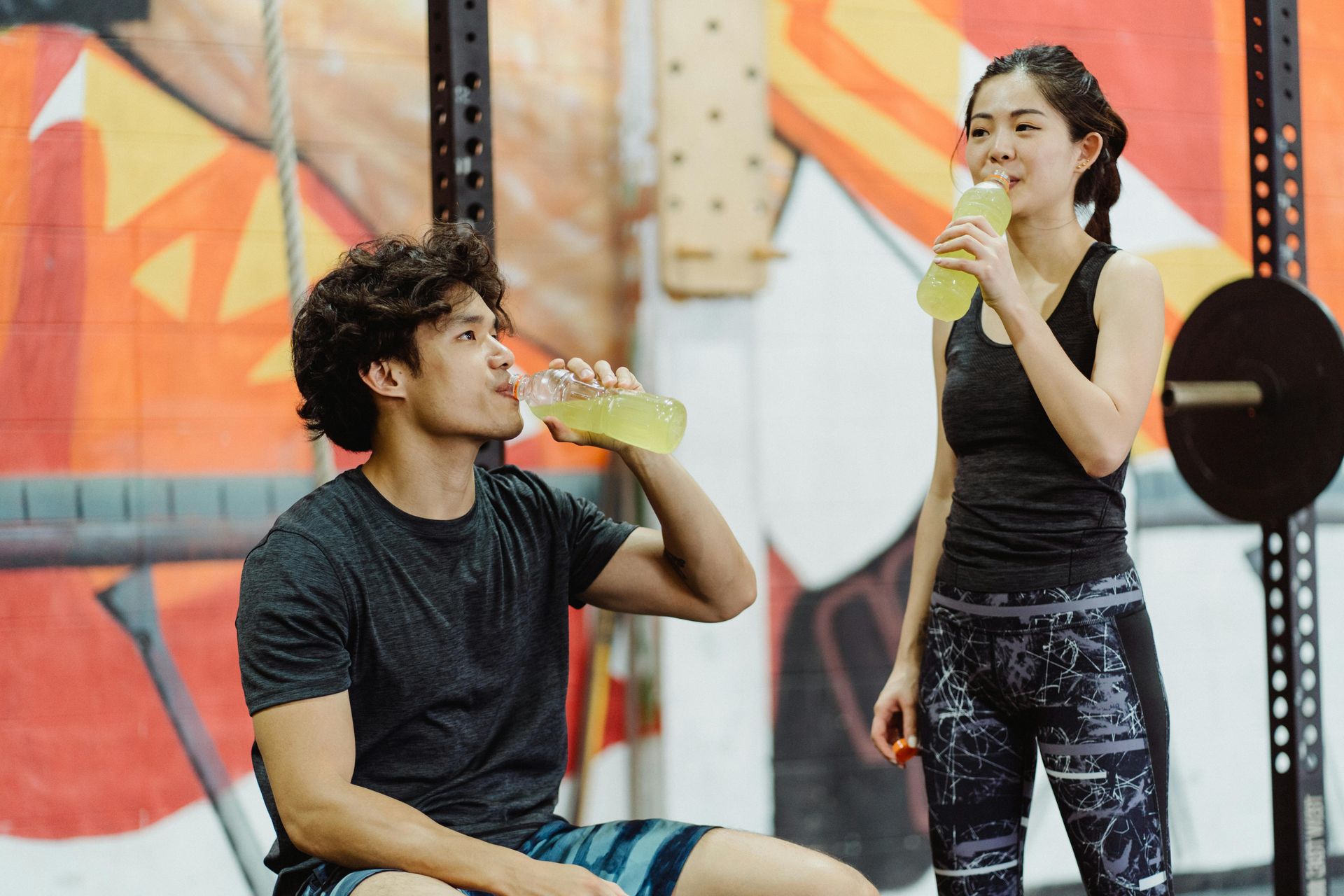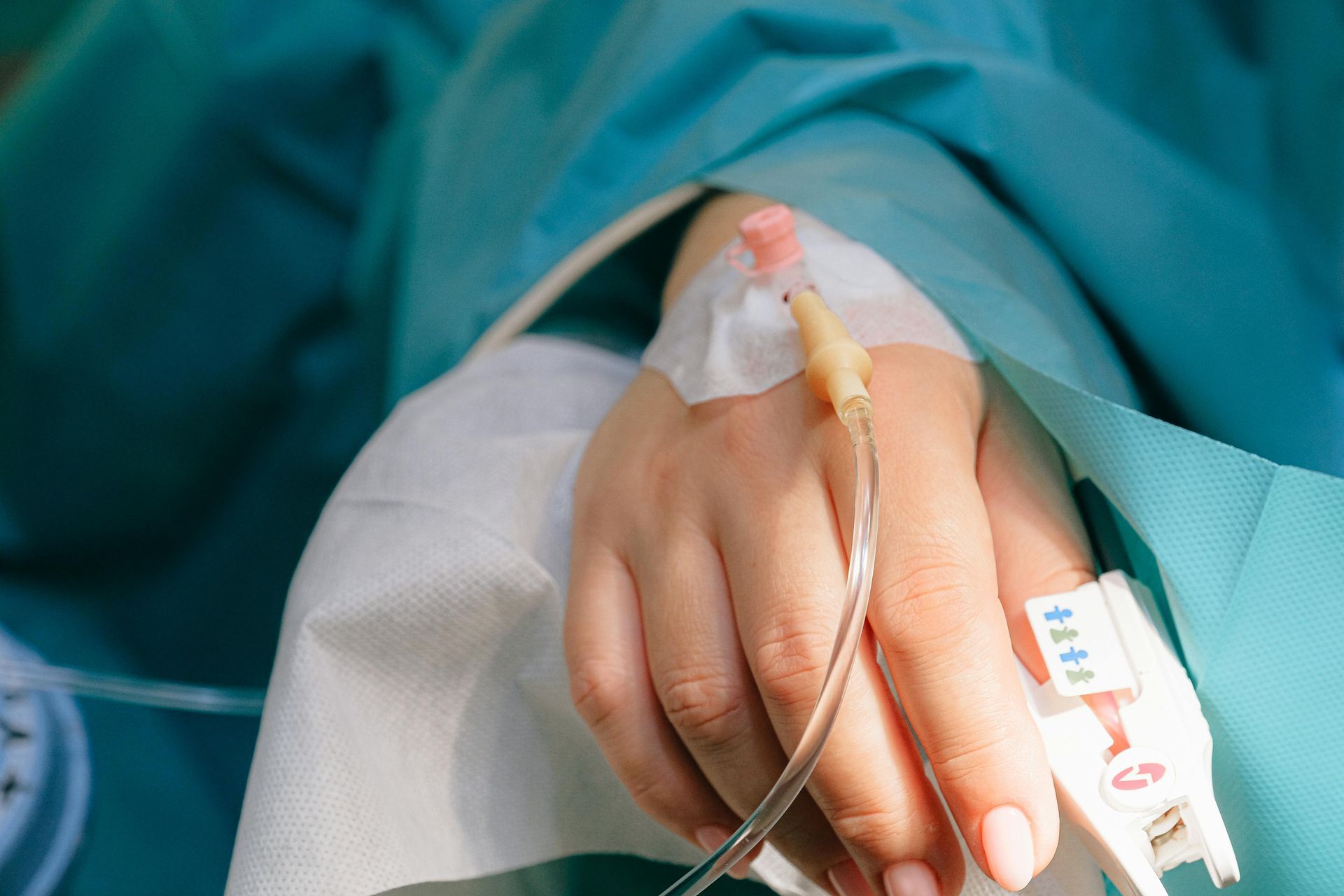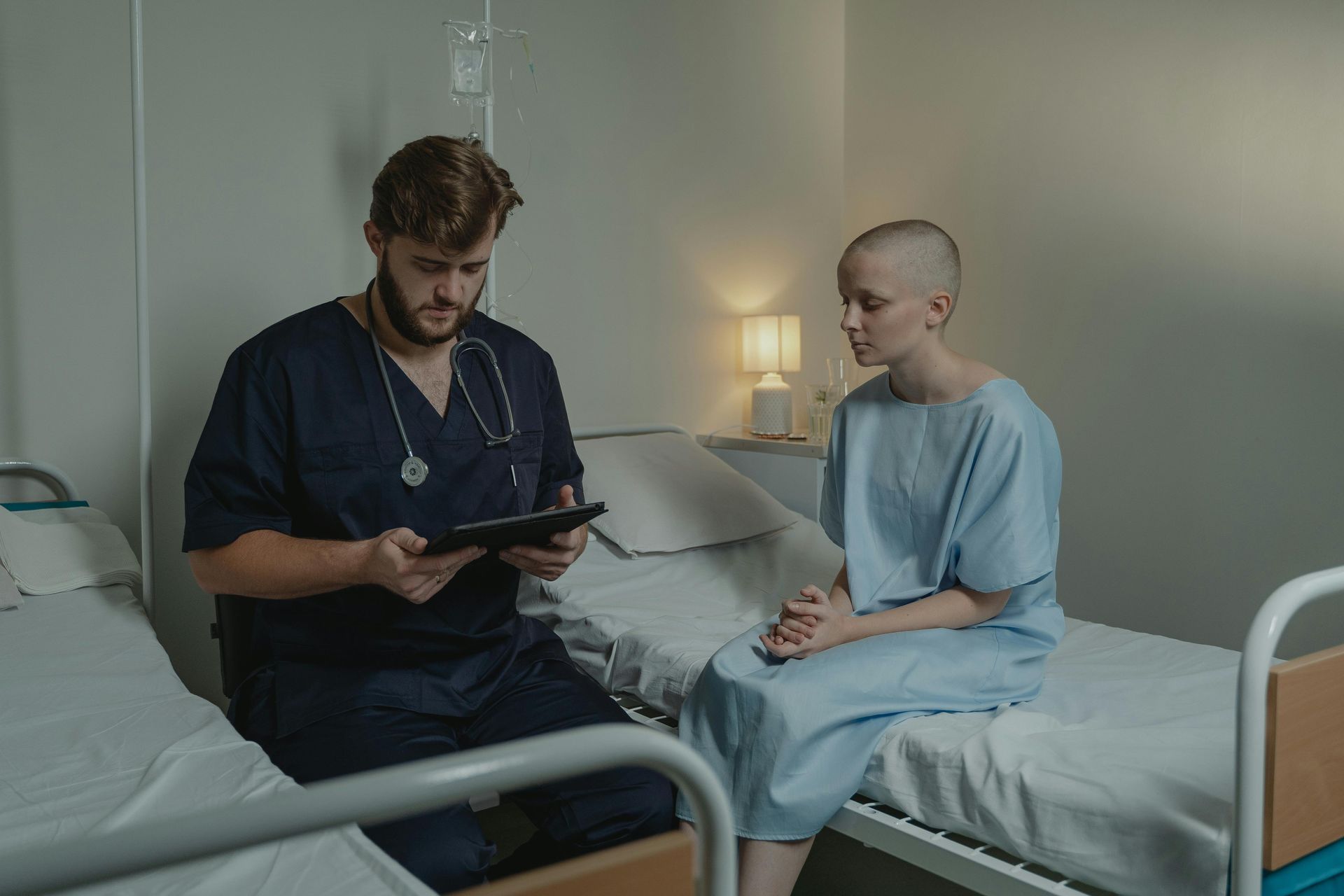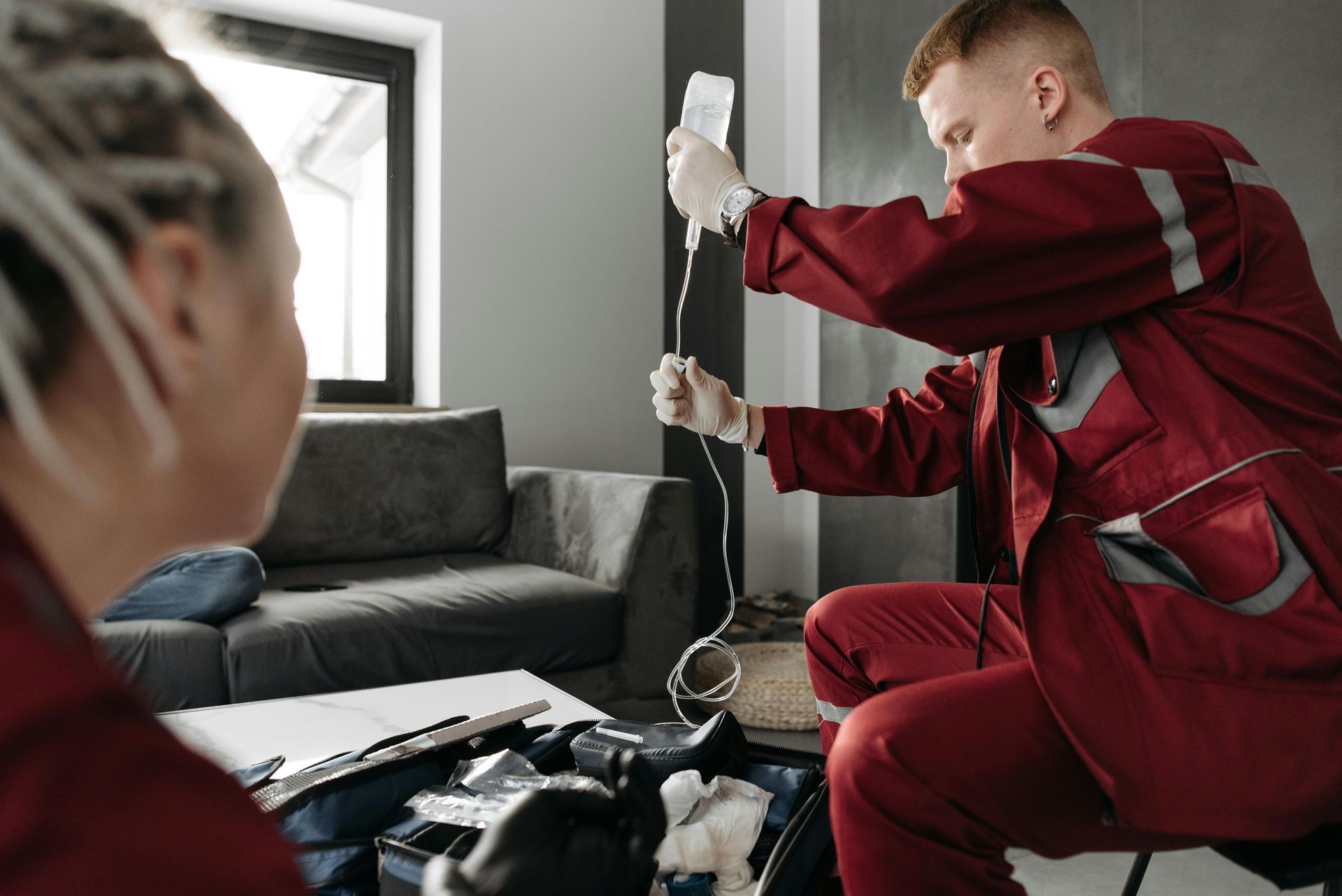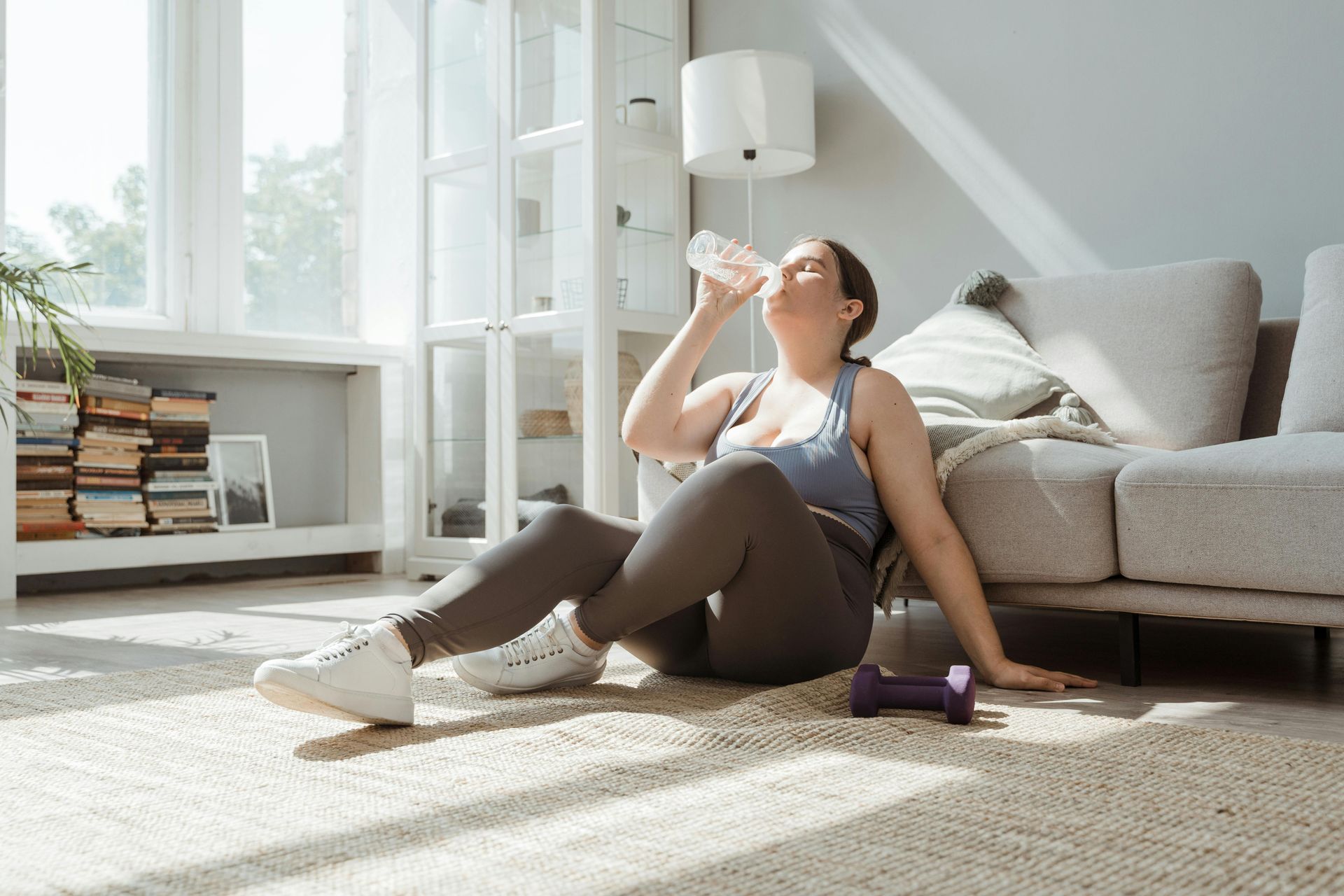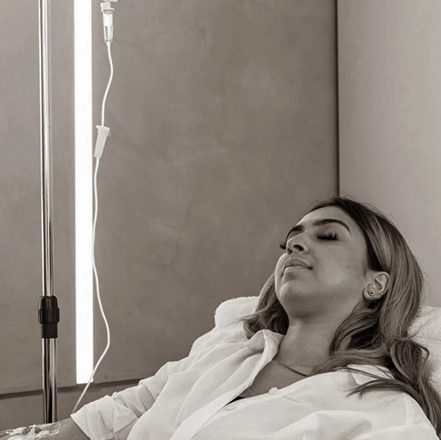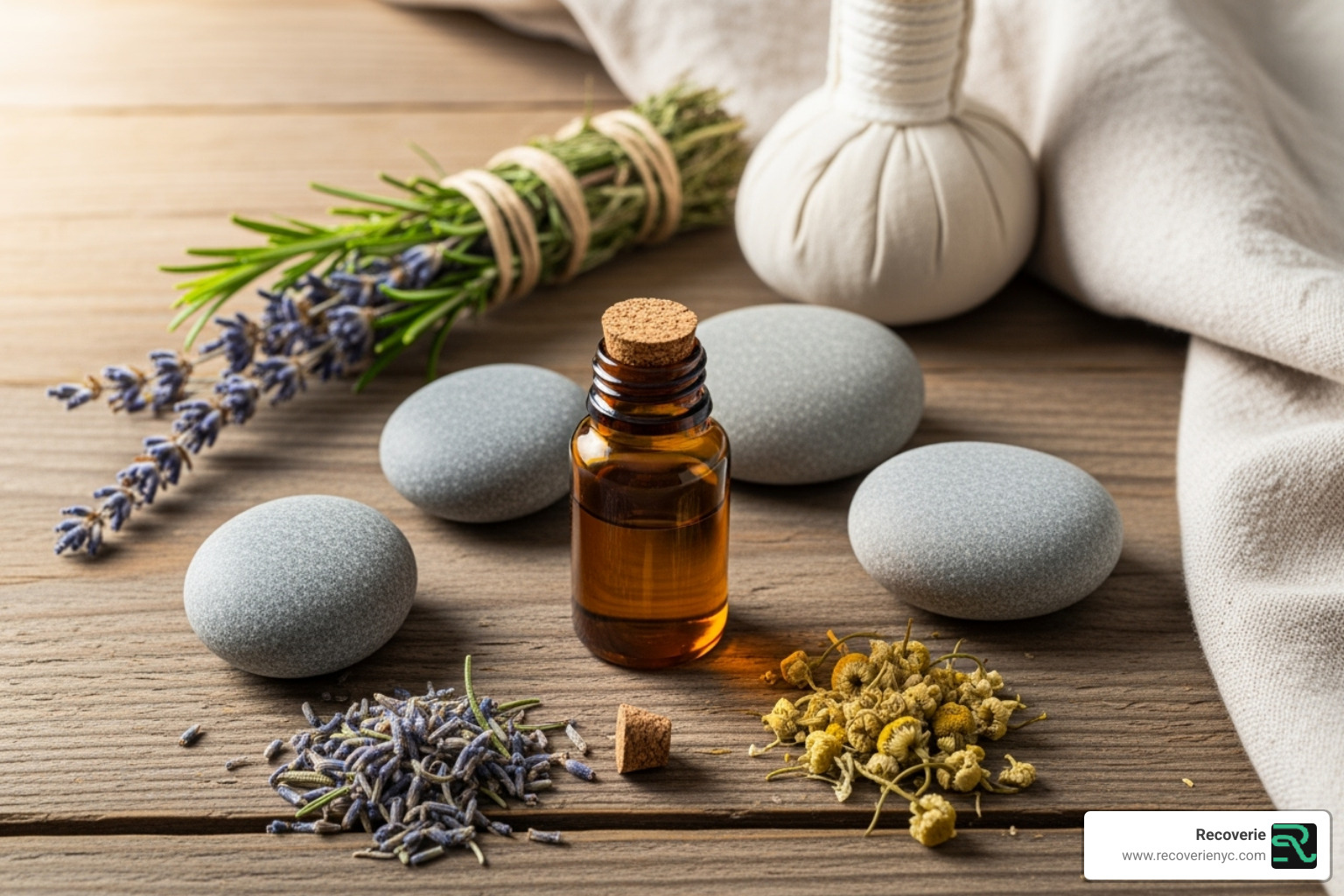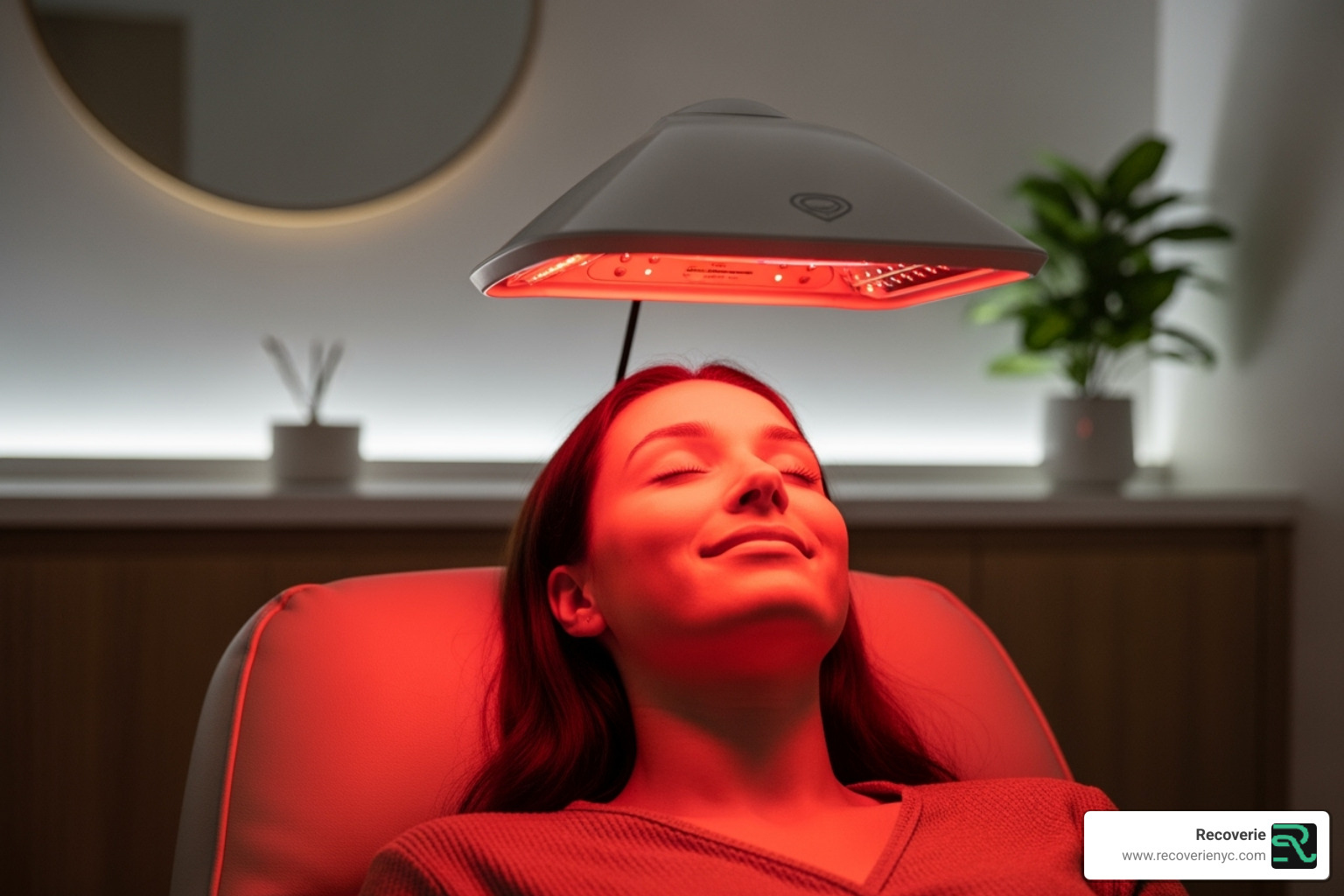Joint Venture: Unlocking Comfort with Effective Therapies
Why Joint Pain Therapy Matters for Your Daily Life
Joint pain therapy includes various treatments designed to reduce pain, improve mobility, and restore quality of life. Whether you're dealing with arthritis, injury, or chronic inflammation, effective therapies can help you regain control over your daily activities.
Quick Overview of Joint Pain Therapy Options:
- Lifestyle Changes: Anti-inflammatory diet, weight management, low-impact exercise
- Home Remedies: Heat/cold therapy, Epsom salt soaks, gentle stretching
- Medical Treatments: Over-the-counter medications, prescription drugs, physical therapy
- Injections: Corticosteroids, hyaluronic acid, orthobiologics
- Advanced Therapies: Red light therapy, cryotherapy, acupuncture, massage
- Surgical Options: Joint replacement, arthroscopy (when conservative treatments fail)
Joint pain is a major health challenge, particularly in a demanding urban environment. The constant stress of city life can worsen joint problems, but you don't have to accept it as inevitable. Modern therapy combines traditional medicine with innovative wellness technologies to address both symptoms and underlying causes.
From simple home remedies to cutting-edge treatments like photobiomodulation and whole-body cryotherapy, a wide spectrum of options is available. The key is finding the right combination that works for your specific situation, lifestyle, and goals.
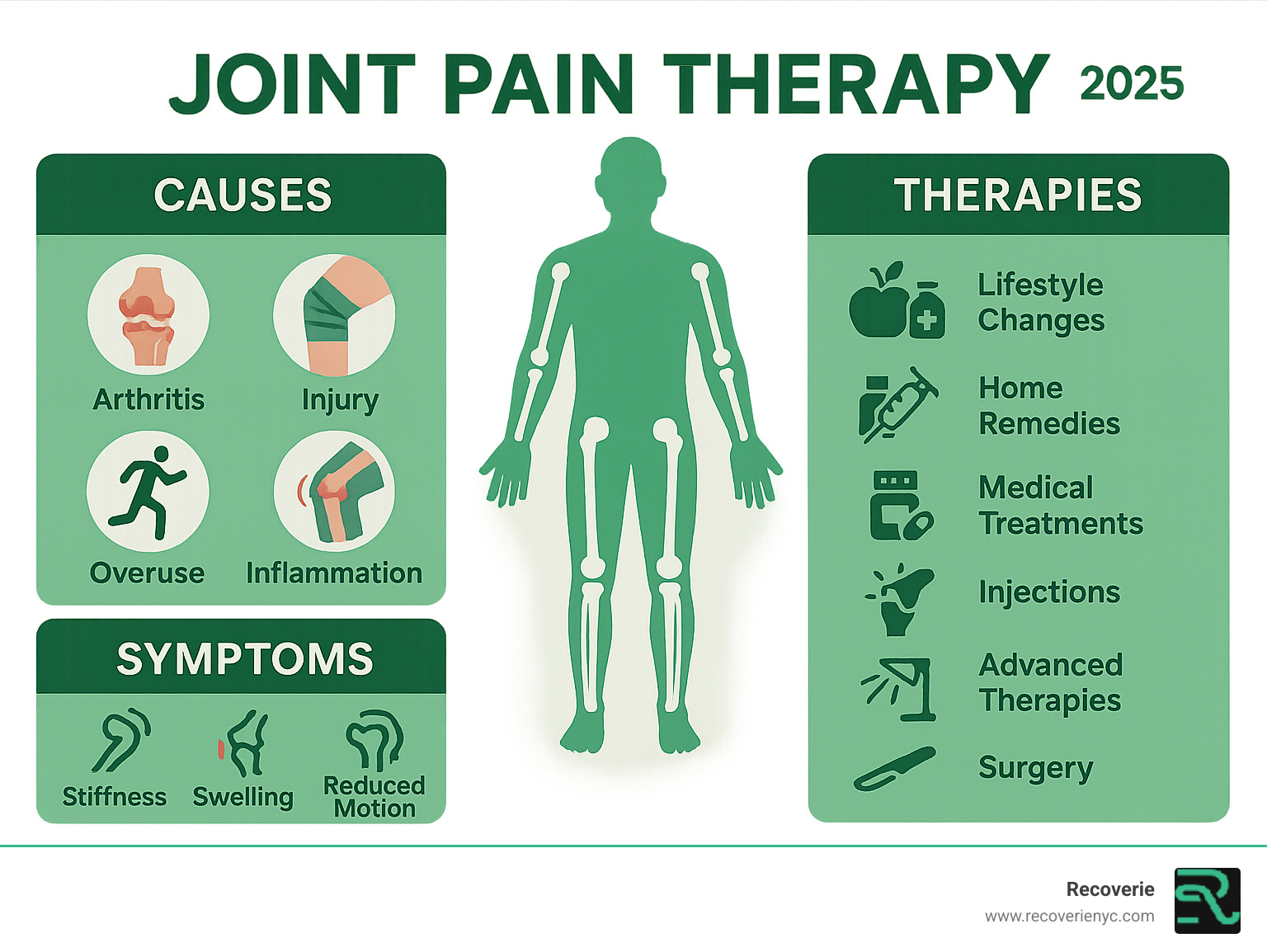
Understanding Joint Pain: Causes, Symptoms, and Diagnosis
Joint pain is a discomfort affecting the body's crucial connections where bones meet. It can range from a mild ache to severe, throbbing pain, making simple tasks feel monumental. Understanding the cause is the first step toward relief.
What Are the Common Causes and Symptoms?
The reasons for joint pain are varied. A primary culprit is arthritis , a term covering over 100 conditions. In fact, according to the CDC, over 58 million Americans have arthritis, making it a widespread challenge.
- Osteoarthritis: Often called "wear and tear" arthritis, it develops slowly and is more common with age.
- Rheumatoid arthritis: An autoimmune disorder where the body's immune system attacks healthy joint tissue.
- Other Causes: These include gout (from uric acid crystals), bursitis (inflammation of cushioning sacs), and common injuries like sprains or fractures. Simple overuse from repetitive motions can also lead to pain.
Common symptoms include a dull achy pain, sharp soreness , or a burning sensation. You might also experience a grating sensation with movement, stiffness (especially after rest), noticeable swelling , and a reduced range of motion . These issues frequently appear in the knees, hips, shoulders, and hands , impacting mobility and daily activities.
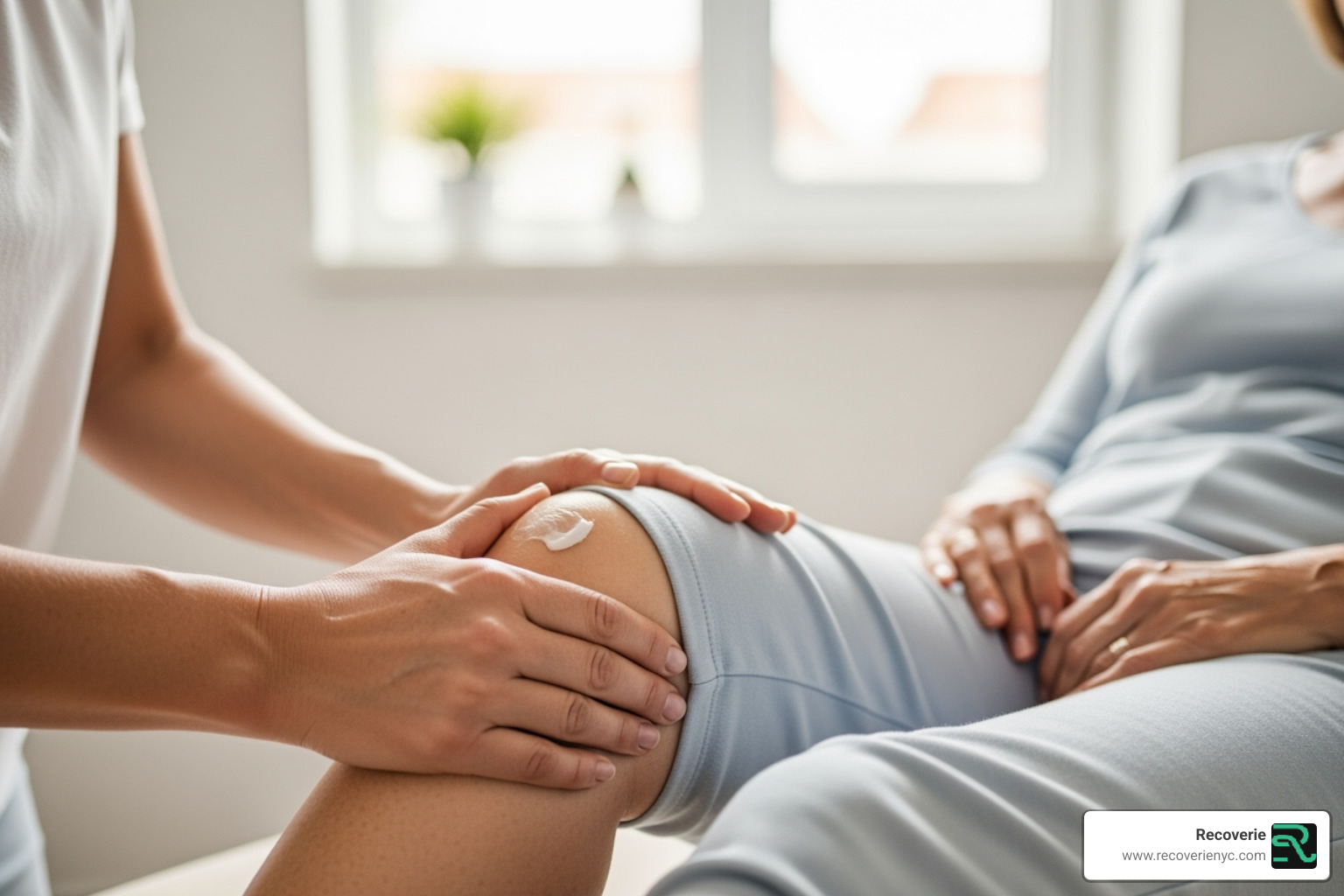
Getting a Professional Diagnosis
While minor aches may resolve, seek professional help if your joint pain is persistent , interferes with daily life, or is accompanied by signs like severe swelling , a fever , or unexplained weight loss . These could signal a more serious condition.
A doctor will gather clues to understand your situation. This involves a detailed patient and family history and a thorough physical examination of the joint to check for swelling, tenderness, and range of motion.
To get a clearer picture, your doctor might recommend imaging tests , like X-rays, to reveal joint damage, or lab tests (e.g., blood tests) to look for inflammatory markers. An accurate diagnosis is the crucial first step. It's the foundation for building a personalized and effective joint pain therapy plan, setting you on the path to recovery.
Foundational Relief: Lifestyle and Home-Based Strategies
Your journey to joint pain relief can start at home with simple, powerful changes. These foundational strategies are your first line of defense—accessible, affordable, and effective at reducing pain and improving your quality of life.
Diet, Weight, and Exercise
An anti-inflammatory diet rich in fruits, vegetables, whole grains, and foods with omega-3 fatty acids (like salmon and walnuts) can help calm the inflammation driving joint pain. Conversely, processed foods and excess sugar can fuel it.
Weight management is also critical. As research from the Cleveland Clinic shows, losing even a modest amount of weight can dramatically reduce joint pain , as it takes significant pressure off your knees and hips.
While it may seem counterintuitive, the right kind of movement is excellent medicine for joint pain. Low-impact exercises like swimming, walking, or cycling are gentle on your joints while strengthening the muscles that support them. Swimming is particularly beneficial as the water supports your body weight. Even gentle activity can improve flexibility and reduce stiffness. The key is to start slowly and listen to your body.
At-Home Pain Management Techniques
Your home can be a sanctuary for relief.
- Heat therapy (warm baths, heating pads) increases blood flow and relaxes tight muscles, ideal for stiffness.
- Cold therapy (ice packs) is best for acute pain and swelling, as it can numb pain and reduce inflammation .
Assistive devices like canes, braces, or orthotics are smart tools that help you stay active comfortably. Don't underestimate the power of proper posture and good body mechanics to prevent unnecessary strain on your joints.
The Role of Mind-Body Therapies
Chronic pain involves both the joint and the brain's response to pain signals. Mind-body therapies can be incredibly valuable.
Cognitive Behavioral Therapy (CBT) teaches practical strategies for managing the physical and emotional impact of chronic discomfort. Simple relaxation techniques like deep breathing and meditation can calm your nervous system and reduce pain perception. Managing stress is a crucial part of joint pain therapy , as stress can amplify pain. These mind-body connections empower you by addressing both the physical and emotional aspects of joint discomfort for a comprehensive approach to feeling better.
Medical Interventions for Joint Pain
When lifestyle changes and home remedies aren't enough, it's time to explore medical interventions. These proven medical tools can be added to your joint pain therapy toolkit to provide the relief you need to get back to enjoying life.
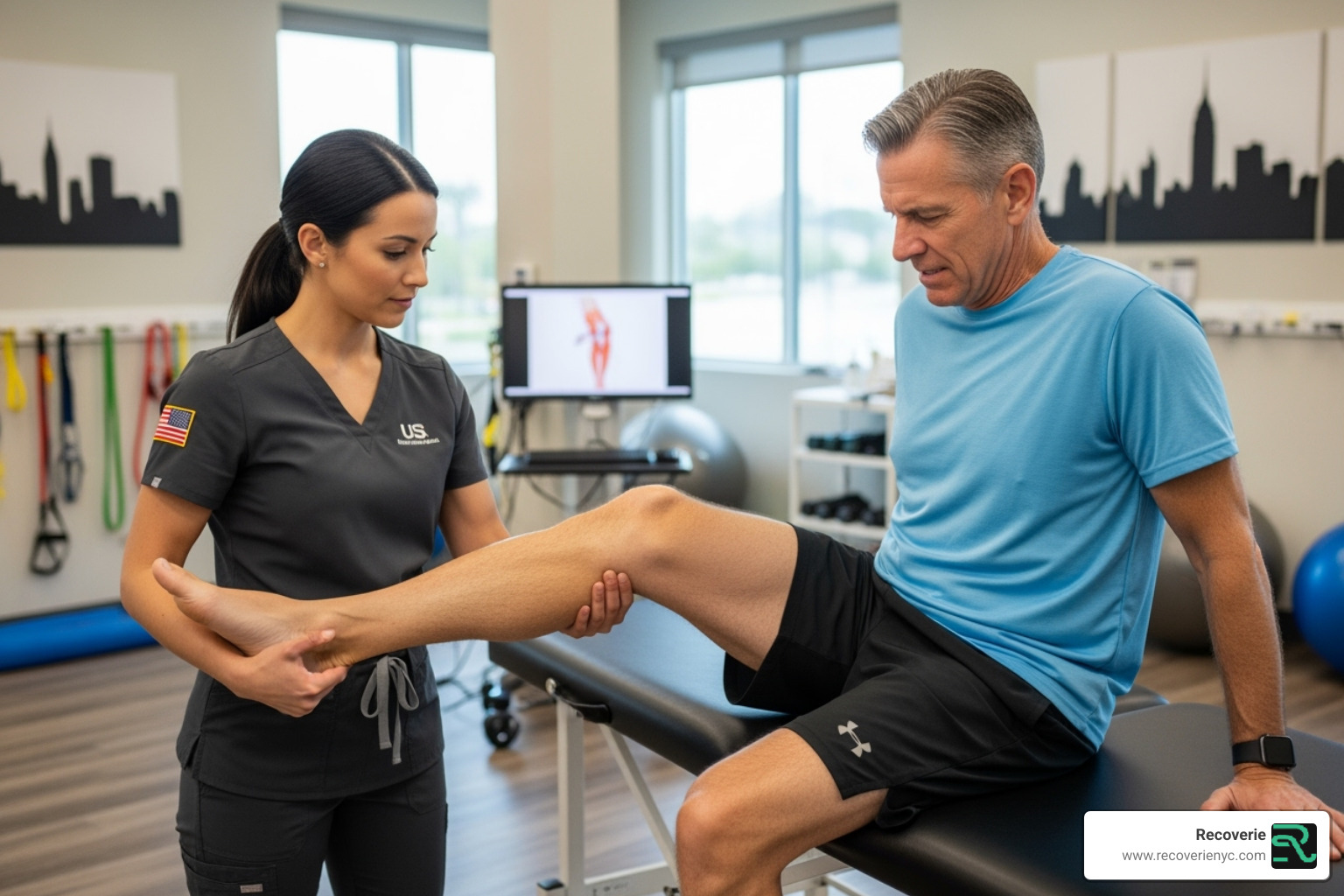
Medications and Topical Treatments
Over-the-counter (OTC) options are a common starting point. Acetaminophen relieves pain but not inflammation. NSAIDs like ibuprofen and naproxen target both pain and inflammation but should be used as directed due to potential side effects with long-term use.
Topical treatments apply relief directly to the painful joint. These include capsaicin creams , cooling menthol and camphor products, and anti-inflammatory diclofenac gels or patches .
For more severe or inflammatory conditions like rheumatoid arthritis, prescription medications are used. DMARDs, biologics, and JAK inhibitors are advanced drugs that can slow disease progression and prevent joint damage. Other options like duloxetine and tramadol may be prescribed for chronic pain. Always consult your healthcare provider before starting any new medication.
The Role of Physical Therapy in Joint Pain Therapy
Physical therapy is a cornerstone of joint pain therapy , addressing root causes rather than just symptoms. A physical therapist creates a personalized plan to reduce pain, promote faster healing , and restore mobility. Key benefits include:
- Improved Mobility: Exercises gradually restore your joint's range of motion.
- Strength Building: Strengthening the muscles around a joint creates a natural brace, taking pressure off the joint itself.
- Improved Body Mechanics: Learning how to sit, stand, and move correctly protects joints from further damage.
Physical therapy empowers you to become an active participant in your recovery, often using techniques like therapeutic taping or heat and cold therapies to improve results.
Understanding Different Types of Joint Injections
When other treatments need a boost, injections can deliver targeted relief directly to the source of pain. They are most effective when combined with other therapies.
- Corticosteroid injections: These powerful anti-inflammatories provide rapid, temporary relief (often for a few months), making them ideal for acute flare-ups.
- Hyaluronic acid injections: Also known as "gel shots," these injections supplement the joint's natural lubricating fluid, providing relief that can last six to twelve months, especially for osteoarthritis.
- Prolotherapy: This technique uses an irritant solution (like concentrated sugar water) to trigger the body's natural healing response and stimulate the growth of stronger tissue. Research is still evolving.
- Orthobiologics: These treatments use your body's own healing materials. Platelet-Rich Plasma (PRP) uses concentrated platelets from your blood, while cell therapy uses cells from bone marrow or fat tissue to potentially repair damage and reduce inflammation.
Injections are not a magic bullet. Discuss the expectations, costs, and role of injections in your overall treatment plan with your doctor, as many newer treatments may not be covered by insurance.
Advanced and Complementary Joint Pain Therapy Options
When traditional treatments need a boost, exploring advanced and complementary approaches can open new possibilities for joint pain therapy . These options range from time-tested practices to innovative technologies.
Complementary and Holistic Therapies
Many find relief from therapies that have been used for centuries.
- Acupuncture , rooted in traditional Chinese medicine, uses thin needles to stimulate natural healing and has been shown to be effective for knee osteoarthritis.
- Massage therapy loosens tight muscles around joints, increases blood flow, and reduces inflammation. It also activates the body's relaxation response, which helps dial down pain signals.
- Chiropractic care focuses on improving spinal alignment and joint function, which can relieve pressure on related joints.
Natural supplements have also gained attention. As the Arthritis Foundation notes, certain natural remedies can offer relief. Turmeric (curcumin) has impressive anti-inflammatory power. Omega-3 fatty acids can reduce swelling, while glucosamine and chondroitin may support cartilage health. Always discuss supplements with your doctor.
Innovative, Non-Invasive Joint Pain Therapy
Here in Brooklyn, we're pioneering the future of joint pain therapy with scientifically-backed treatments that work at a cellular level.
- Red Light Therapy (Photobiomodulation): Uses specific light wavelengths to energize your cells, increasing ATP production and helping damaged cells repair themselves. Many members notice reduced pain and increased range of motion within weeks.
- Whole Body Cryotherapy: A few minutes in our cryochamber triggers a powerful, body-wide anti-inflammatory response, ideal for multiple joint issues.
- Contrast Therapy: Alternating between our sauna and ice bath creates a "vascular flush," pumping nutrient-rich blood to your joints while removing inflammatory waste.
- Infrared Sauna: Infrared light penetrates deep into tissues, providing warmth that relaxes muscles, increases blood flow, and eases stiffness.
- Compression Therapy: Uses controlled pressure to reduce swelling and improve circulation, especially helpful for knees and ankles.
These advanced therapies are designed to complement your existing treatment plan, not replace it.
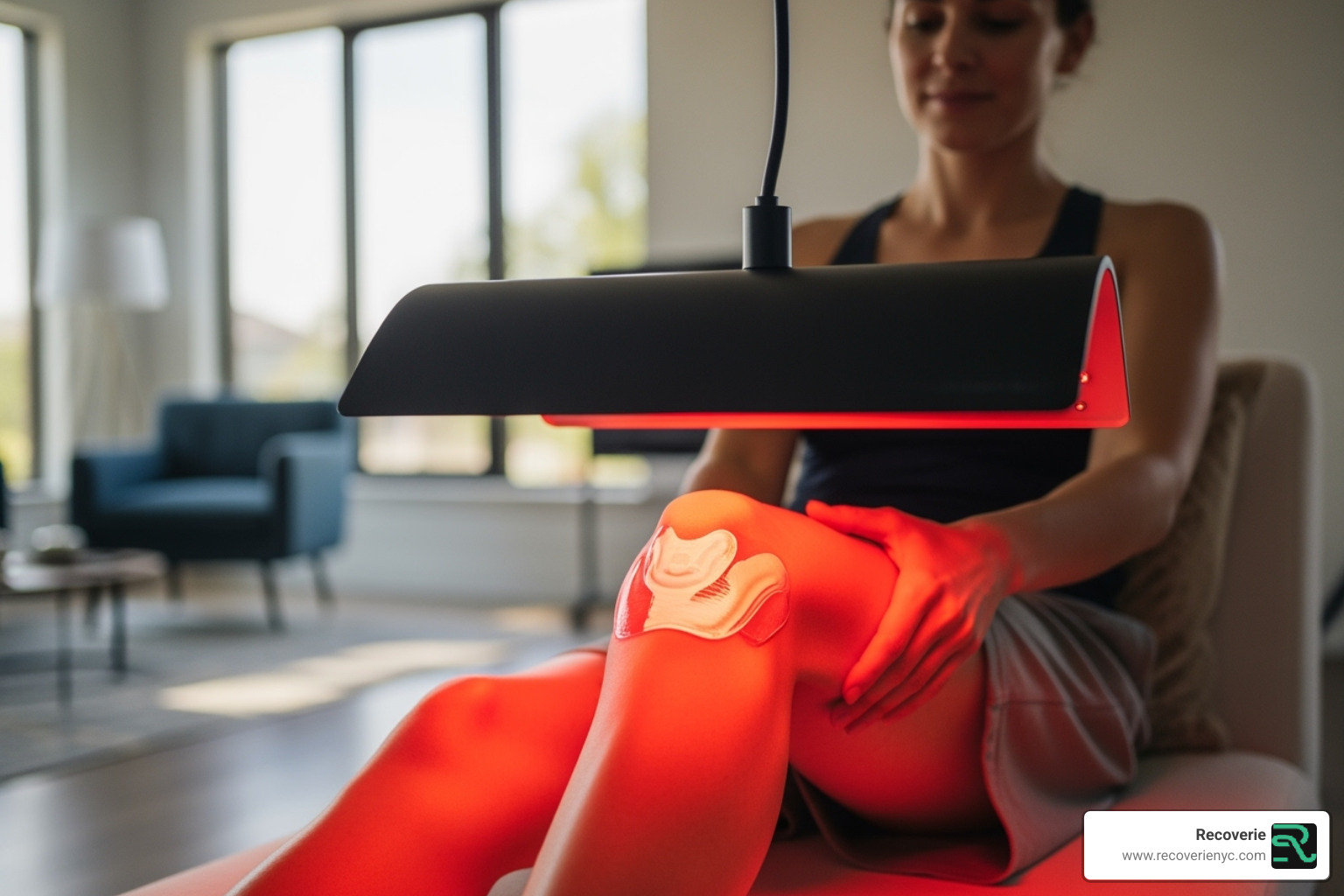
When to Consider Surgical Options
Surgery is a last resort, considered when non-surgical joint pain therapy has failed and pain significantly limits your life.
- Arthroscopy: A minimally invasive procedure using a tiny camera to repair joints through small incisions.
- Joint fusion: Permanently connects bones to eliminate painful movement, sacrificing flexibility for stability.
- Osteotomy: Involves cutting and reshaping bone to realign a joint and shift weight off damaged areas.
- Joint replacement surgery: The most common solution for severe arthritis, where damaged joint surfaces are replaced with artificial components.
The decision to have surgery requires careful evaluation with an orthopedic surgeon to weigh all risks and benefits.
Frequently Asked Questions about Joint Pain Therapy
How long does it take for joint pain therapies to work?
The timeline for relief varies significantly by treatment. Understanding what to expect can help you stay committed to your healing process.
- Immediate Relief: Some treatments, like cortisone shots , can provide significant relief within a few days, though the effects are temporary (often around 3 months). You might also notice some improvement after your first red light therapy session, with deeper benefits building over time.
- Gradual Improvement: Therapies like physical therapy require more patience. You're building strength and retraining movement, so you'll likely notice gradual improvements over several weeks, with more significant changes happening over months.
- Long-Term Investment: Lifestyle changes , such as diet and weight loss, offer the most sustainable benefits but accumulate over months and years.
For chronic conditions, the goal is long-term management and steady improvement in quality of life, not an instant cure.
Can joint pain be cured completely?
The answer depends on the cause. For an acute injury like a sprain, complete recovery is often possible with proper treatment and rehabilitation.
However, for chronic conditions like osteoarthritis or rheumatoid arthritis, a complete "cure" that reverses the condition is not currently possible. The goal of joint pain therapy shifts from curing to highly effective management. This means achieving significant pain reduction, improving joint function, slowing disease progression, and helping you live a full, active life. Many people with chronic conditions find they can manage their symptoms effectively and maintain an excellent quality of life.
Is exercise safe if my joints hurt?
Yes, but it's crucial to choose the right kind. While your instinct may be to rest, movement is one of the most powerful tools for joint healing. The right exercise encourages blood flow, reduces inflammation, and prevents stiffness.
Exercise also strengthens the muscles that support your joints, taking pressure off the joint itself. The key is to focus on low-impact movements that provide benefits without stress. Excellent choices include swimming, water aerobics, walking, cycling, and gentle yoga. High-impact activities like running should generally be avoided if they cause pain.
Before starting any new exercise routine, it's always best to talk with a healthcare professional or physical therapist. They can help design a personalized plan that is safe and effective for your specific situation.
Conclusion
Navigating joint pain can feel overwhelming, but a world of joint pain therapy options is available. The best path to lasting comfort often involves combining strategies, from simple home changes to advanced medical and natural therapies. It's about building your own personalized toolkit for relief.
Your journey to feeling better is unique. It may take patience to find the right mix of therapies, but with perseverance and support, taking charge of your well-being is absolutely within reach.
Here at Recoverie, nestled by Brooklyn Bridge Park, we understand the demands of New York City life and the stress it puts on your joints. We've created a space offering advanced, natural therapies like cryotherapy , ice baths , and red light therapy to boost your wellness journey.
We believe in personalized care within a supportive community. Our goal is to help New Yorkers like you recover, reset, and thrive with less pain and more movement.
Ready to take the next step in your joint pain therapy journey? We invite you to explore our core services and find a holistic path to feeling your best.


